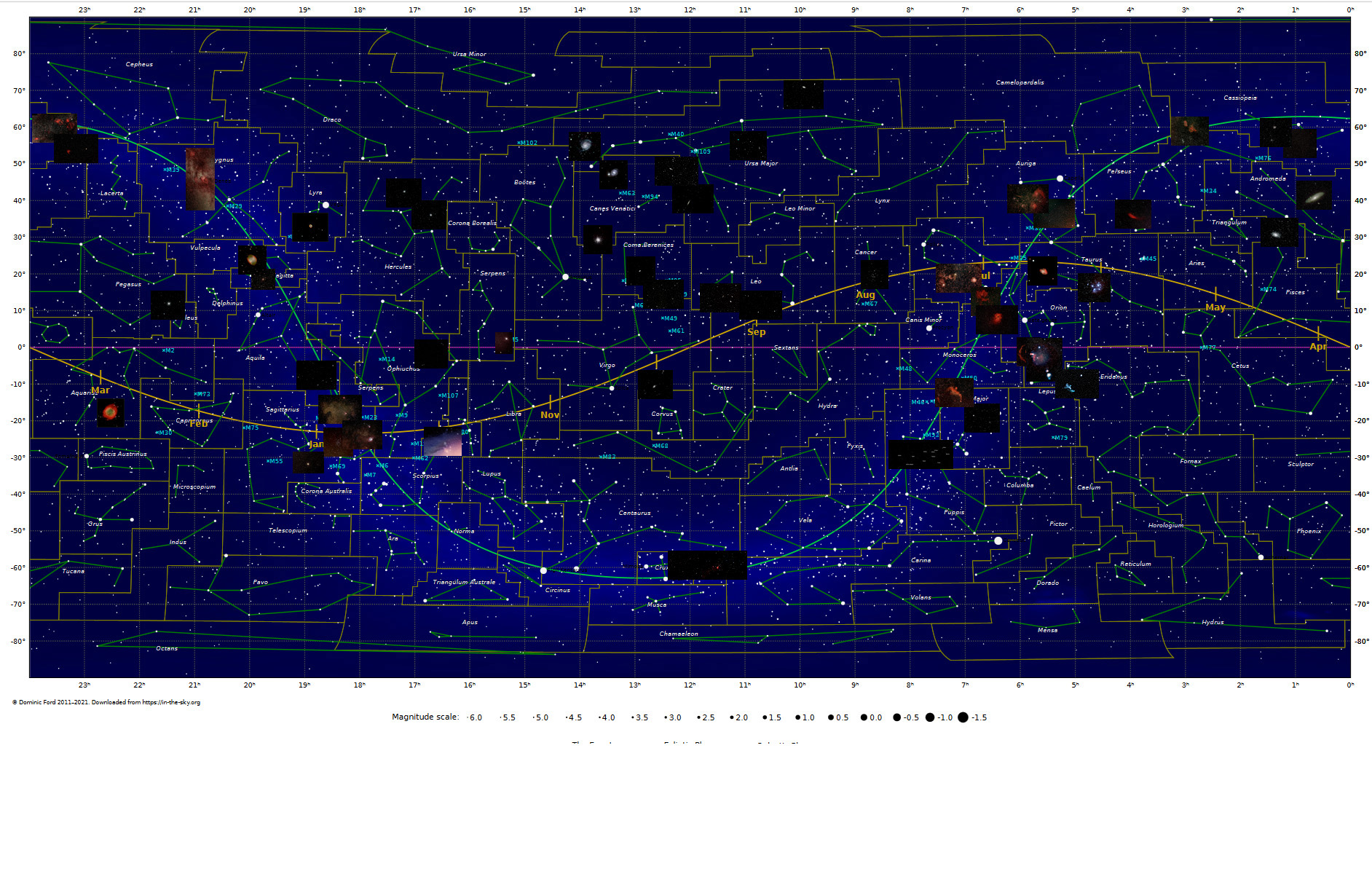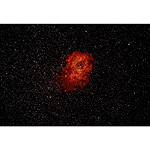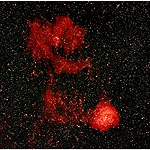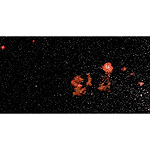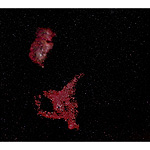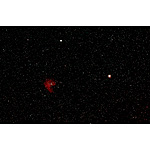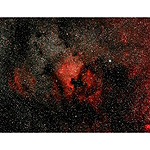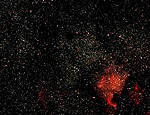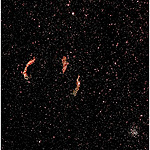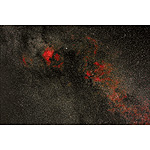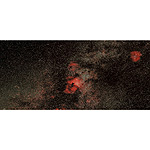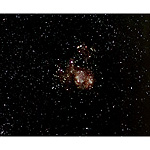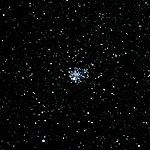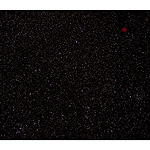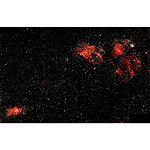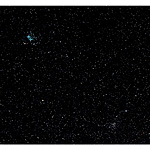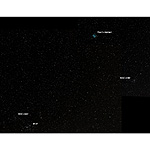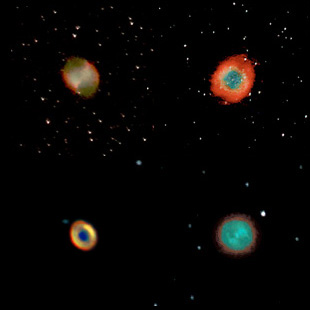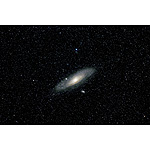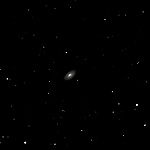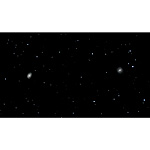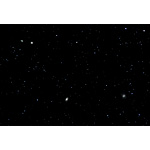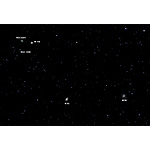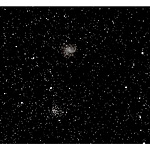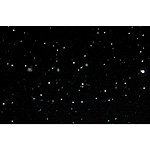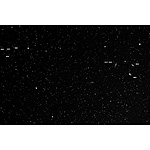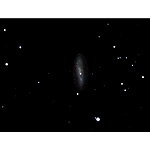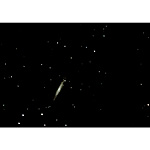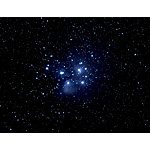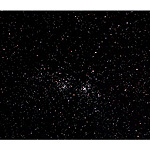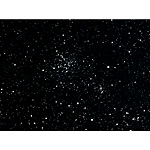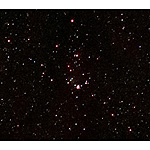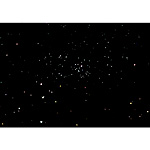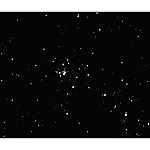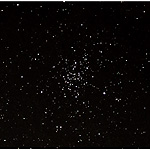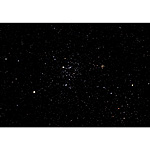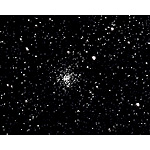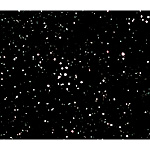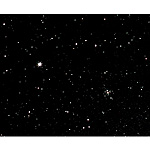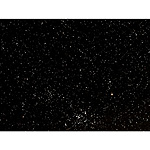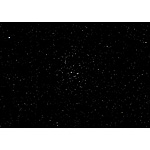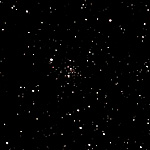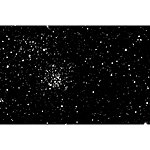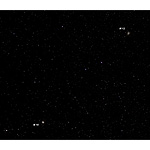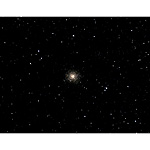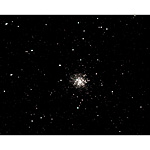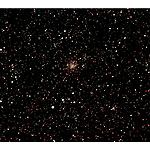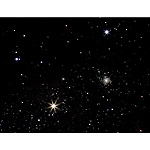Digital Astrophotography
2020 and later
Emission and Reflection Nebulae
Nebulae are clouds of interstellar gas where stars are born as the gaseous material condenses into a tightly packed mass. Emission nebulae have one or more bright stars nearby that cause the gases to emit energy primarily in the reddish hydrogen-alpha part of the spectrum. Reflection nebulae have one or more bright stars nearby but not close enough to cause emission, and only bluish light from the stars is reflected. |
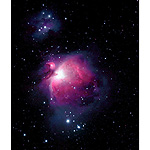 Orion & Running Man Nebulae 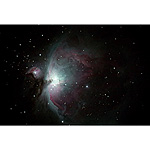 Orion Nebula 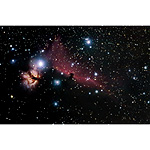 Flame & Horsehead Nebulae (Orion Belt) |
 Barnard's Loop 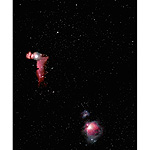 Orion Belt and Sword 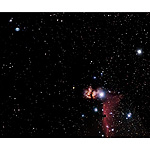 M78, Flame & Horsehead Nebulae 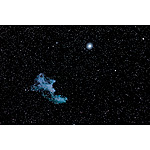 Witch Head Nebula | |||
 Lagoon & Trifid Nebulae  Lagoon & Trifid Nebulae 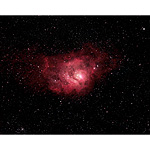 Lagoon Nebula 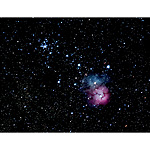 Trifid Nebula & M21 Open Cluster |
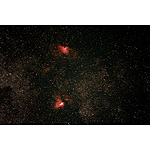 Omega & Eagle Nebulae  Omega Nebula 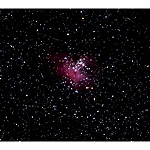 EagleNebula |
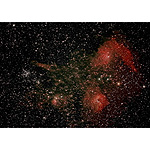 Flaming Star and Sh2-236 Nebulae; M38 open cluster  Flaming Star and Sh2-236 Nebulae; M35, M36, M37, & M38 open clusters 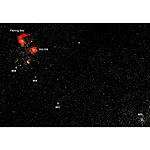 Flaming Star and Sh2-236 Nebulae: M35, M36, M37, & M38 open clusters |
Planetary Nebulae
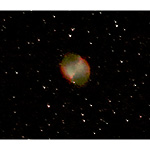 Dumbbell Nebula 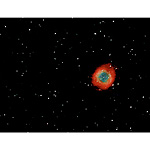 Helix Nebula  Owl Nebula & Surfboard Galaxy 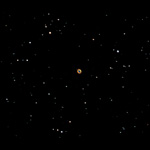 Ring Nebula | |||
 Dumbbell Nebula 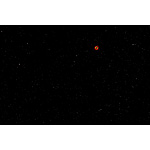 Helix Nebula 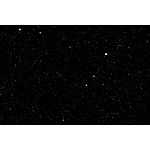 Ring Nebula 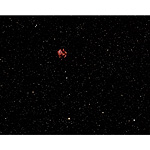 Medusa Nebula & NGC 2395 Open Cluster |
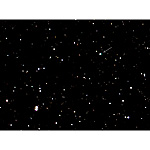 Blinking Eye Nebula 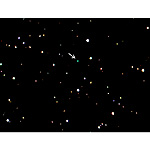 NGC 6833 Nebula  Little Gem Nebula |
Galaxies
Galaxies contain hundreds of billlions of stars.
 M94 Galaxy |
Virgo Cluster of Galaxies
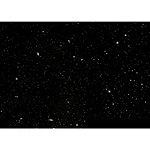 Markarian's Chain  Markarian's Chain annotated  Virgo Cluster 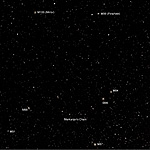 Virgo Cluster annotated |
 M88 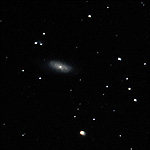 M90 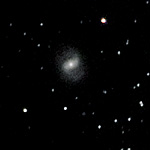 M91 |
Supernovae
Supernovae are powerful explosions of stars when their internal nuclear fuel supplies burn out and the stars quickly collapse, resulting in massive shock waves causing stars to explode. |
 Supernova SN 2023ixf Pinwheel Galaxy 19 April 2022-3 July 2023-6 April 2024  Supernova SN 2023ixf Pinwheel & NGC 5474 Galaxies 3 July 2023 |
Supernova Remnant
The Crab Nebula, while quite small and really difficult to photograph without a telescope, is the remnant of the great supernova of 1054 A.D. This supernova was so bright in 1054 that it was visible in the daylight for 23 days, and some medieval rulers added its representation to their coinage as a divine signal for their rule. |
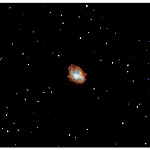 Crab Nebula |
Star Clusters
Open star clusters are loosely bound by mutual gravitational attraction. Note the blue nebulosity around the stars of the Pleiades. Globular clusters are spheroidal conglomerations of stars, and often contain more than a million stars in a single cluster. |
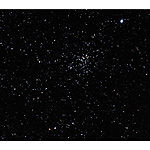 NGC 2360 Caroline's Cluster 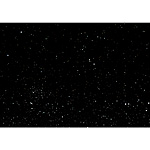 NGC 752 Open Cluster |
Film-based Astrophotography
1980s - 1990s
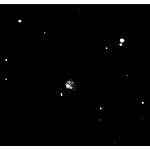 M11 Wild Duck Open Cluster  Omega Centauri Globular Cluster  Canis Major+ 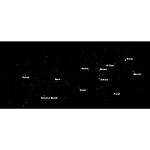 Canis Major+ annotated |
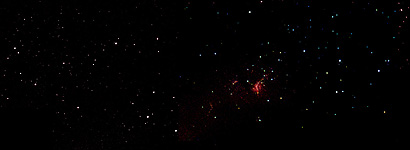 Eta Carina Nebula, Omega Centauri, Southern and False Crosses |
 Eta Carina Nebula, Omega Centauri, Southern and False Crosses |
Locations of the deep sky objects shown above
